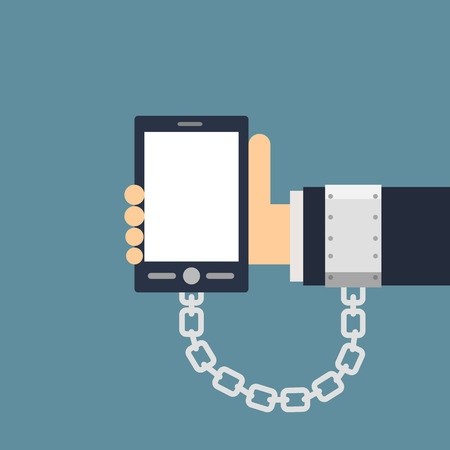
IT'S THE METRIC at the heart of every company: valuation. Corporations and startups alike battle the competitive marketplace every day to increase the estimate of their brand or service’s monetary value. There are legions of financial experts, management teams, investors, entrepreneurs, pundits, and small business owners assessing financial worth, but there’s another valuation that doesn’t attract much attention: that of the human resources behind those companies and their prices.
On the balance sheet, in fact, employees are viewed as liabilities, as an external element to the operations, part of accounts payable or wages payable. Clearly, there would be no company but for all the people who make it fly, which makes them very valuable—indeed, invaluable to any organization. Studies show the more we can communicate employee value, the more the monetary yardstick will grow.
FROM PAYCHECK TO PARTNER
This is because the most important key to employee engagement is a sense of being valued by the company. Call it the Worth Ethic. When employees feel valued, their motivation changes, from collecting a paycheck to partner in the mission. That makes them want to go the extra mile and expend the definition of engagement, discretionary effort.
The shift from external motivation (paycheck) to internal goals (service, excellence, challenge) means that effort no longer has to be whipped up from the outside; it’s self-generated, the only way you can have engagement, anywaty, which has to be come from within.
Researchers Edward Deci and Richard Ryan at the University of Rochester have documented that the usual external reward system motivates effort only when there’s a reward. When you run out of pay raises and promotions, there’s nothing left to incentivize, since external rewards motivate only the need for more external rewards, whose effects are ephemeral. You get a quick bump in happiness, and then it’s gone,
The real motivator is internal motivation, which satisfies core psychological needs, such as autonomy and competence. Those are the ultimate arbiters of self-value. They gratify self-mastery needs that are self-generating and self-propelling.
How do we unleash this self-propulsion engine? Consistent and a new kind of communication, development programs, and words and especially deeds that show employees they are appreciated and an important part of the organization. Let’s take a look at some of the most effective ways to increase employee's sense of feeling valued and the job satisfaction that follows.
SIX KEYS TO EMPLOYEE VALUATION
1. Offer development programs. The first step for clients I work with is a work-life balance program, one that shows staff you care and want to help them grow. When people are given tools to work smarter, manage stress, and feel like they are taking care of their personal responsibilities too, they feel valued. Learning and progress gratify their core needs and increase the value of their skill-set.
More effective, confident, less stressed minds change attitudes. And company value. In one study of large companies (Arthur) work-life balance initiatives were shown to increase shareholder value by some $60 million per company. No doubt, that is because more discretionary effort leads to increased productivity. A Federal Reserve study found that work-life balance policies boosted productivity 10.6%, while a report on telework saw a gain in productivity of 30% (Pitt-Catsouphes, Marchetta).
Development programs are a signal that you want to solve bottlenecks and create more effective work practices. Turning down the pressure and increasing skill-sets makes the team feel you are looking out for them. Beyond that, employee training is one of the key levers of employee engagement. When employees are given opportunities to learn and better their craft, they reciprocate with more commitment and performance.
2. Meet with employees one-on-one more often. Everyone is busy, but making time to connect with staff is essential. People who are the least engaged say their managers have no time to meet with them. Among engaged employees, 87% know their managers well. Drop by and find out what’s going on with your employees. What are the pressing issues? How’s life outside the job? What are they excited about in their life?
3. Recognize skill and competence. Saying thank you more often is great, but it’s even more effective when you recognize the skills of the person that were brought to bear on the task. As we have learned, competence is a core need in everyone. We have to feel effective, and when we do, we feel great.
When you want to give someone props for something, tell them you really like the way they did that project. That goes to the mastery drive and encourages more of it. You can vary your delivery methods for this message by using handwritten thank-you notes from time to time, targeted to their competence and effectiveness. The personal touch has even more salience in a tech world.
4. Speak a different language. When you look at the science of engagement and intrinsic motivation, it’s easy to see why only 32% of the workforce is engaged, according to Gallup. Most managers are too busy to speak to employees and when they do, they use the wrong style of language to evoke engagement—controlling language, using pressure and threats.
That is the opposite of the autonomy need and makes people feel forced and controlled. To unleash engagement, the language has to be more informational, promoting choice, offering rationales for tasks, and providing positive feedback.
5. Solicit participation, ideas, and solutions. The overarching need of humans on this planet is participation. We are not here to be spectators. We are here to be a part of things.
Lack of involvement in the organization drives boredom, learned helplessness, and a withdrawal to presenteeism, in which someone is physically present but mentally AWOL. Encourage employee ideas, feedback and solutions. Companies who invest in employee involvement had a return on investment of 19% in a study by USC’s Edward Lawler.
6. Use active listening and constructive responding. No one is going to feel valuable if you’re talking to them while gazing obsessively at your phone. Leave your devices behind or turn off the sound on them before you meet with your colleague or staffer.
Use active listening techniques, such as making sure you are facing the person, making eye contact, and listening intently, to let them know you are focused on them and what they have to say. When it comes to responding, avoid the active destructive mode of pointing out the negative or passive constructive mode of responding in generalities.
Opt for constructive responding by asking questions and offering authentic, enthusiastic support. Yes, there are times to point out negative issues, but that can be done while reinforcing the overall positive trajectory and what can help that going forward.
Expressions of value have to be consistent and convicing, so let them know more than once a year that you like the job they are doing and why. A little acknowledgement goes a long way to increasing the valuation that's most important to all who can affect the bottom line. And that's priceless.













